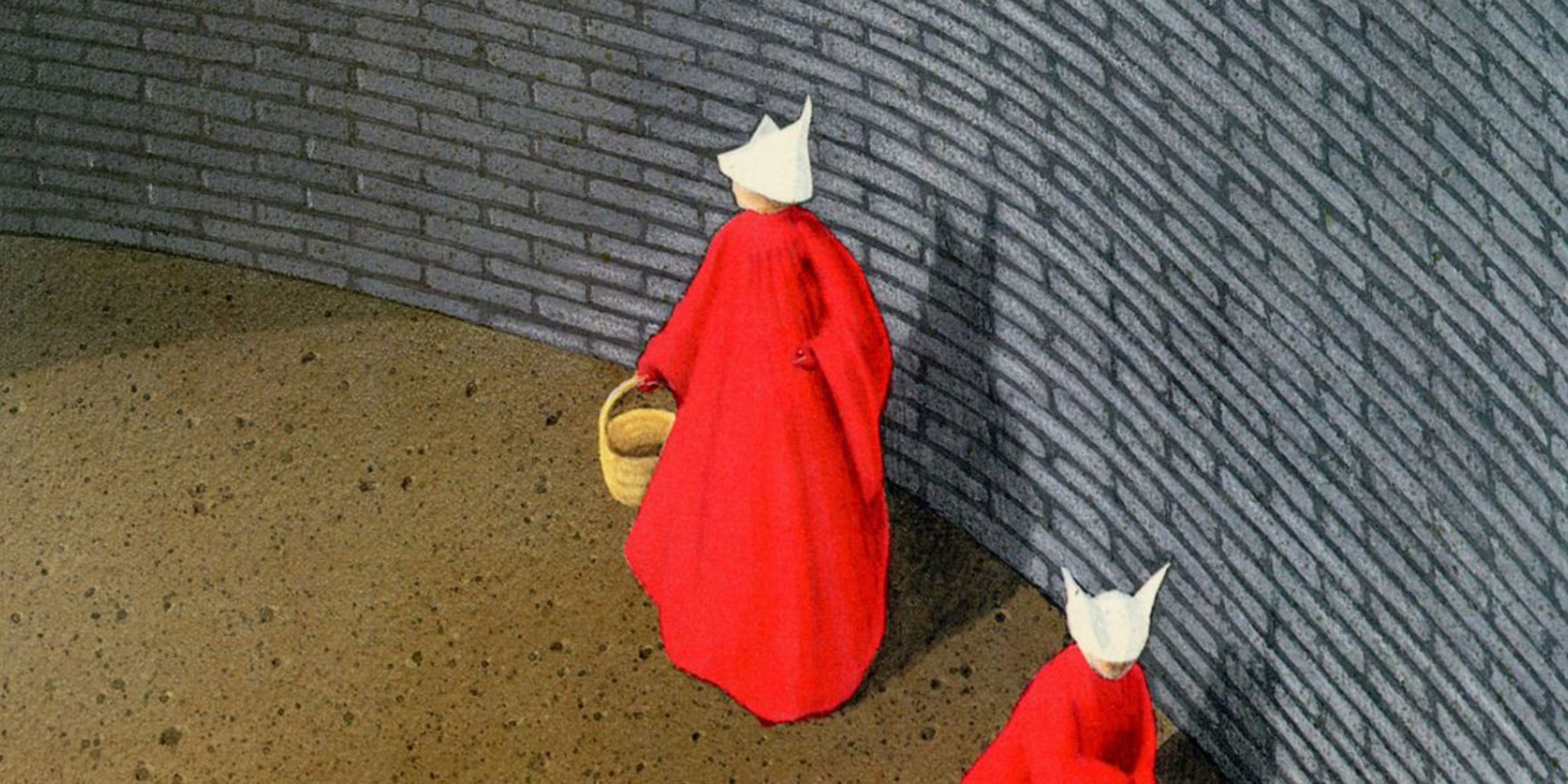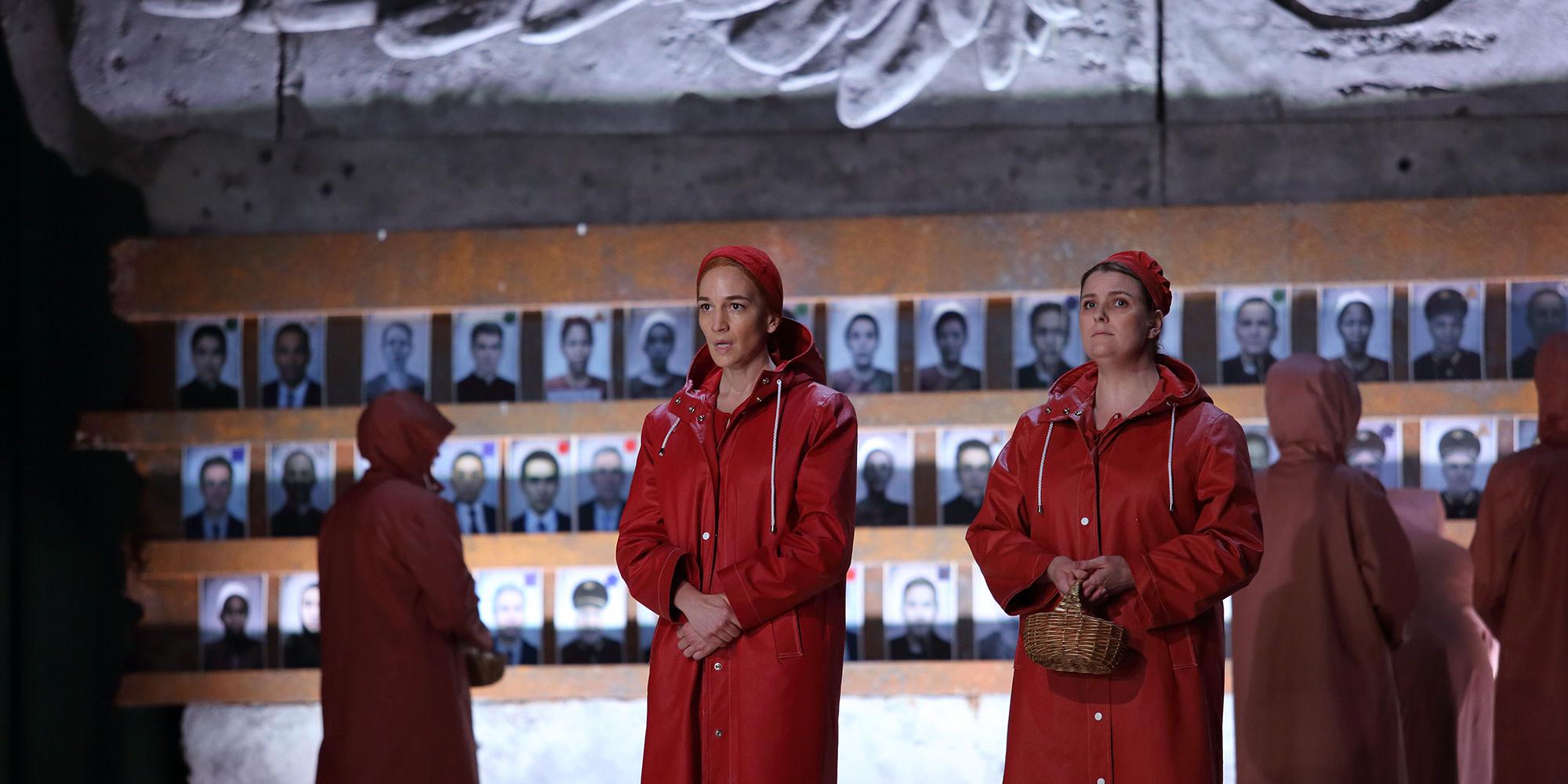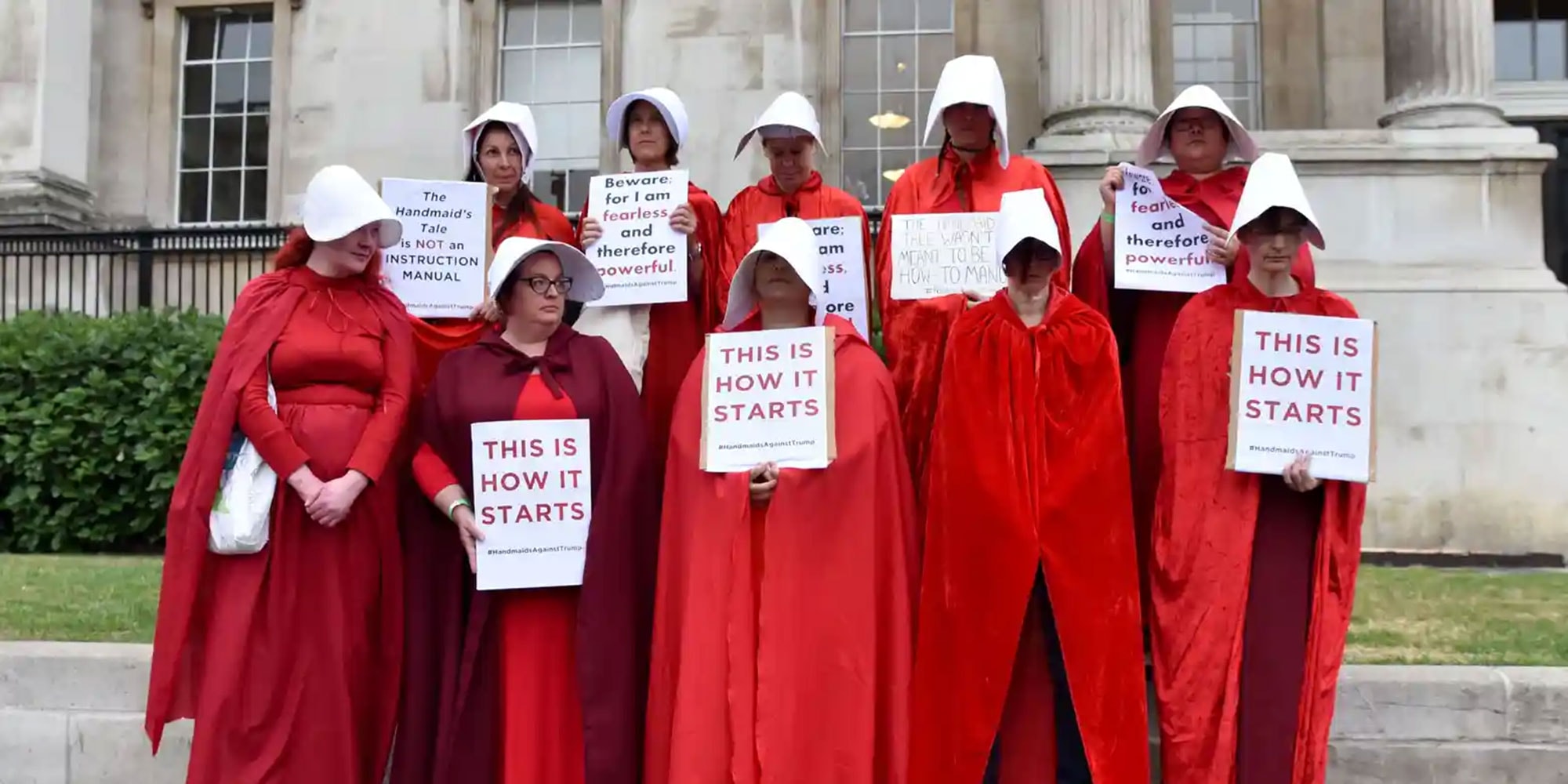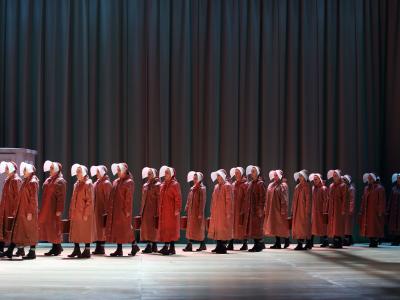The Handmaid's Tale: Opera and Beyond
The Handmaid’s Tale has gripped audiences across the world since the novel’s first release in 1985. Since then, it has been adapted into many forms including an award winning TV show and a powerful new opera.
Where it all began

Audiences were first introduced to the world of Gilead in Margaret Atwood’s dystopian novel, The Handmaid’s Tale. Set in a fictional, patriarchal society where women are stripped of all freedoms, we are introduced to this totalitarian state via the narrator Offred – one of Gilead’s ‘Handmaids’.
The novel explores the idea of women being reduced to their reproductive capabilities. ‘Handmaids’ are given to the ‘Commanders’ who sit at the top of the social hierarchy, to bear them children in a future where human caused disasters lead to widespread fertility issues. However, Atwood refutes the claims that this is solely a feminsit dystopian novel, as the Republic of Gilead also functions on a hierarchical structure where ‘lower class’ males are denied access to ‘Handmaid’s’ and therefore children due to their lack of titles.
The critically acclaimed novel has gone on to be adapted into many different art forms, as well as Atwood releasing a follow up book titled ‘Testaments’, which won the Booker Prize in 2019.
The small screen
Video
The Handmaid’s Tale TV series premiered in 2017. Despite airing over 30 years after the novel’s initial release date, the hard hitting story still remained popular amongst audiences. So much so, that the first series won an incredible 8 Emmys, as well as multiple Golden Globe awards and nominations.
The TV series has begun straying away from Atwood’s original text. This longer form of entertainment provides the opportunity to dive even deeper into the world of Gilead and the characters within it. Elizabeth Moss plays the infamous main character Offred, as she rebels against the new world order. Here we see Offred in a more revolutionary role, fighting not only for her own freedoms, but her friends and family, looking to destroy the whole Republic of Gilead in a desperate plea for revenge.
A fifth series was released this year, based on the sequel ‘Testaments’. This novel is not only set 15 years after the events of ‘The Handmaid’s Tale’, but has three new narrator’s – Aunt Lydia, Agnes and Daisy. Through this more broader lens, as well as multiple episodes, we should gauge a better idea of the plights of different types of women in Gilead, and the various roles women play in this society.
The Handmaid’s Tale opera

Danish composer Poul Ruders transformed this global phenomenon into a thought provoking opera. With a harrowing score, featuring minimalist music, the brutality of Gilead is brought to life, meaning you can experience this dystopian world for yourself when watching the The Handmaid’s Tale opera live.
Remaining true to the novel, the opera is set in a future version of the United States which has been taken over by the religious, patriarchal Republic of Gilead. However, adapting a book into an opera is not always easy. Paul Bentley was faced with the difficult task of adapting the first person narration into a production with multiple singing roles when composing the libretto. They also had to consider how to divide a story written in chapters, into an opera made up of acts. They decided to focus on the core themes and events of the novel, dividing act 1 into the theme of ‘birth’ and act 2 into the theme of ‘death’.
Operas based on books are not uncommon. Although the forms are strikingly different, the themes of drama, tragedy and passion are very much inline with the opera genre. It’s no surprise then that Ruders saw the potential in The Handmaid’s Tale as an opera, and created a powerful production that is still popular with audiences today.
Video
The Handmaid’s Tale in the ‘real’ world

Dystopian novels are often considered a type of ‘warning’ to readers about what the future of society could look like. Although set in a distant future, under the most extreme circumstances, there are often themes within the novel that resonate with modern society.
The overarching theme of ‘The Handmaid’s Tale’ is women’s rights. As a result, the uniform of the Handmaids has been used as a form of protest in women’s rights movements across the world. The big red cloaks and white coned hats have become a symbol of female liberation, despite the fact they represent female oppression within the novel itself.
Atwood has also pointed out that events within ‘The Handmaid’s Tale’ have happened at some point in history. Therefore, it’s not as fictional as one might hope. From forced dress codes, to religious persecution and even the mass prosecution of women during the witch trials, Atwood wanted to ensure the extremities within Gilead were somewhat realistic. Perhaps it is the notion that this tyrannical world is not so far from human capabilities which makes the story so chilling.


